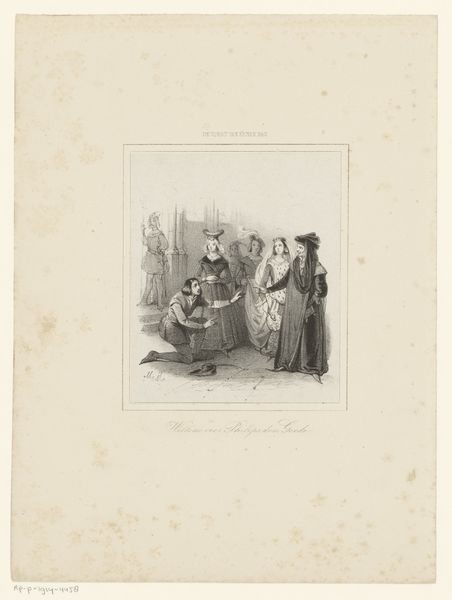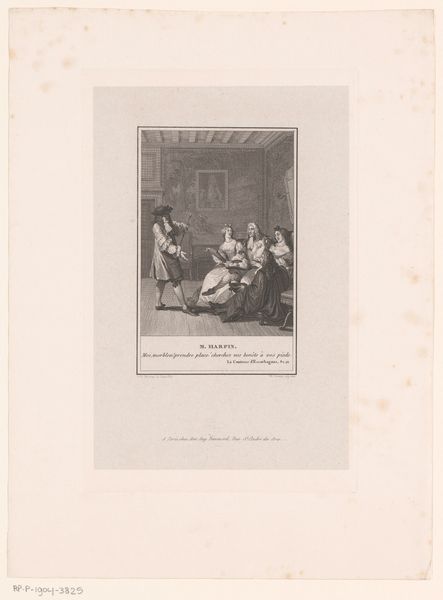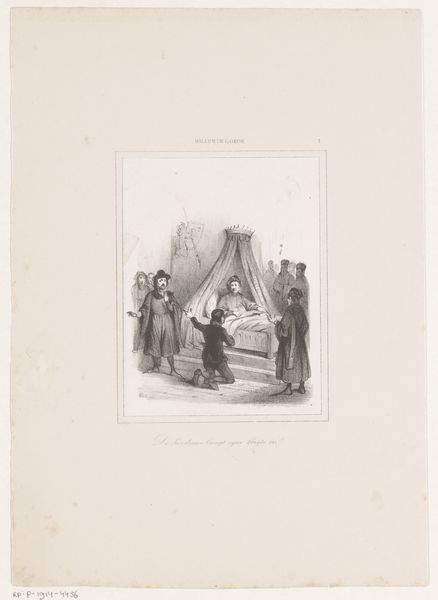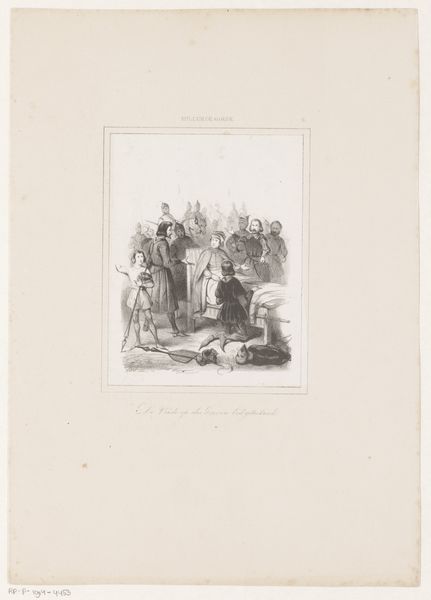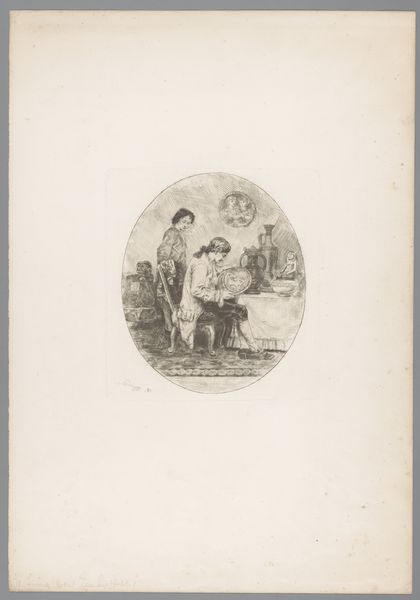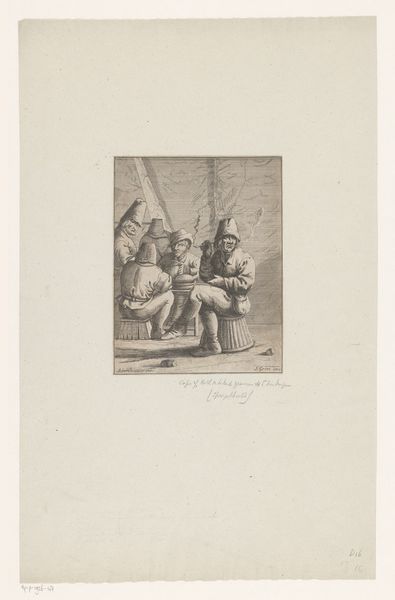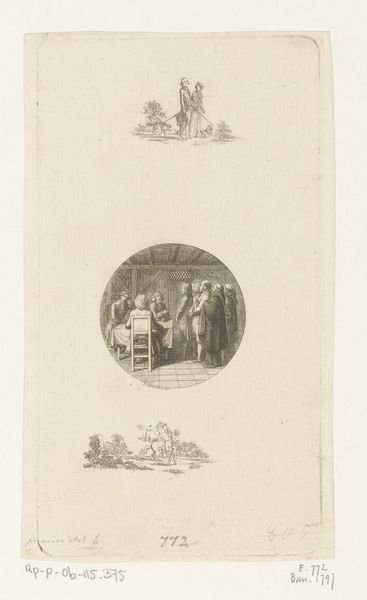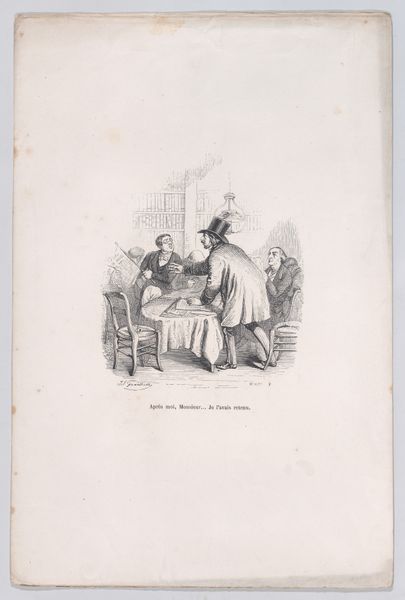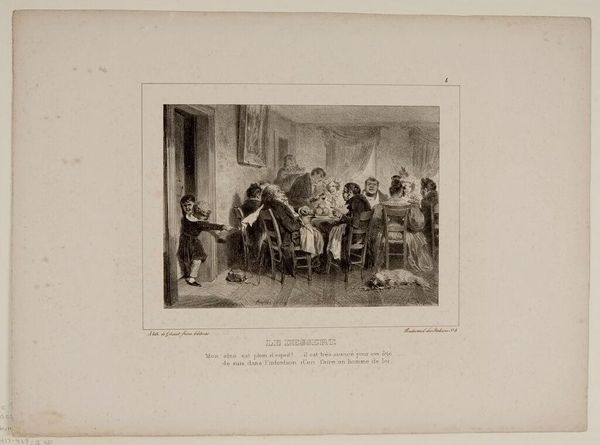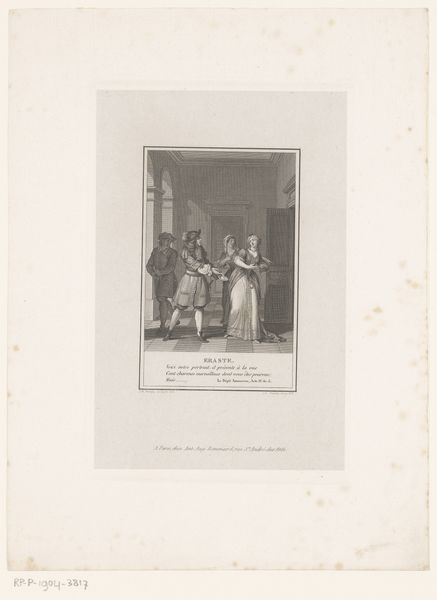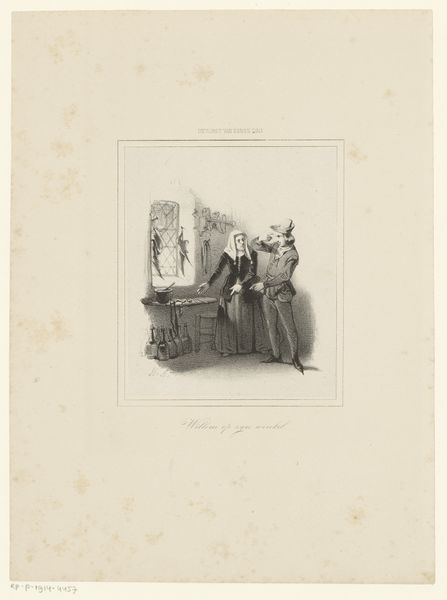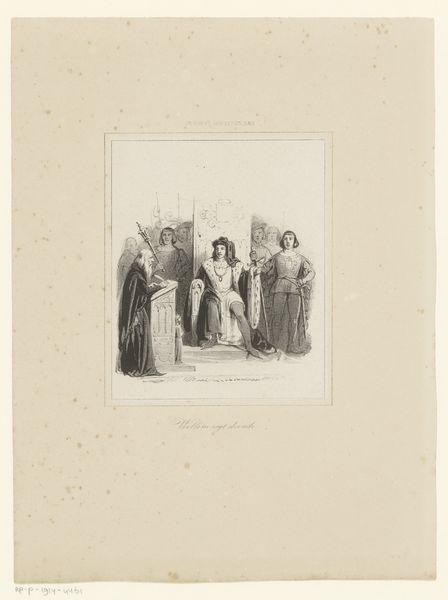
drawing, print, pen, engraving
#
drawing
# print
#
group-portraits
#
pen
#
genre-painting
#
history-painting
#
academic-art
#
engraving
Dimensions: height 310 mm, width 222 mm
Copyright: Rijks Museum: Open Domain
Curator: Here we have a print titled "Willem tijdens het banket aan het hof," or "William at the banquet at the court," created around 1842. It’s made with pen and engraving. Editor: My first thought is that the etching looks incredibly stiff and formal. The figures seem posed, almost like actors in a play. There’s not much naturalism in their postures or expressions. Curator: That formality is certainly deliberate. Prints like these, widely circulated at the time, played a crucial role in shaping historical narratives. Consider the cultural and political function; it’s not necessarily about documentary accuracy but creating a recognizable, laudable version of the past. Editor: So, more propaganda than history lesson? Looking closer, I’m intrigued by the repetitive lines and crosshatching of the engraving process. The sheer labor that must have gone into it! Were these kinds of prints a popular commodity or a high art object? I mean, how were they used and distributed? Curator: Good question. They existed somewhere in between. Academic art traditions heavily influenced the composition, the very arrangement, which speaks to ideas of power, the importance of the social structure in question here, however, the method of distribution democratized these images for a broader public consumption. Editor: It’s interesting to consider this “banquet” as a social ritual. I'm now curious about who paid for it all. What did the servants get out of their labor beyond meager wages? Also, do you think viewers from that time saw the piece the same way we do today? Curator: Undoubtedly, perspectives would vary significantly. Contemporaries likely appreciated the detailed record of the banquet and what it meant for solidifying national identity at a crucial moment. But by examining what and how things are depicted and what gets obscured, we can better discuss how it reinforced contemporary social norms. Editor: I appreciate that consideration of how materials and techniques like engraving could influence not just how art looks but how historical events get constructed. Curator: Precisely. Seeing the means of production helps us interpret how such imagery participates in larger networks of meaning.
Comments
No comments
Be the first to comment and join the conversation on the ultimate creative platform.
